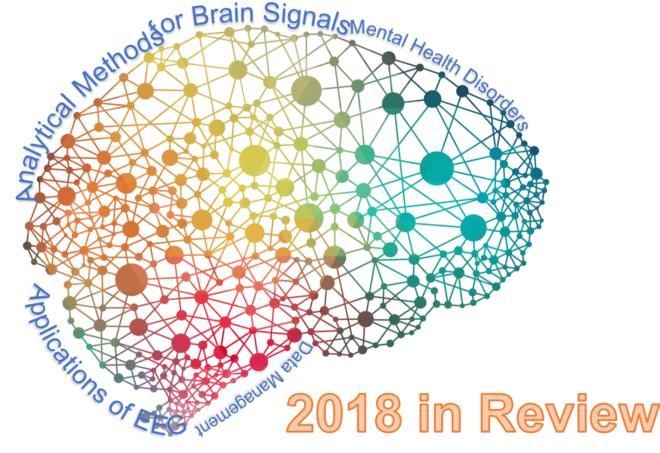From unsolved problems and new research directions in Neuroscience to analytical methods in EEG and biomarkers and diagnosis of mental health disorders, we provide a round up of what we explored on Lab Talk in 2018.
As the year comes to end, we’d like to thank our growing readership and provide a roundup of what we explored on Lab talk. This year we explored unsolved problems as well as new research directions in Neuroscience. We also spent a lot of our effort on analytical methods applied to the EEG as well as issues around biomarkers and diagnosis in mental health, applications of the EEG and examples of intra-person variability. Finally, we debated and discussed issues around the management of science and scientific data. Thank you again and as always, we welcome your feedback and suggestions.
Unsolved Problems
Lab Talk explored some of the big unsolved questions in Neuroscience such as
- Why the brain is continuously active with spontaneous activity rather than simply responding to stimuli?
- Where is information stored in the electrical activity in the brain?
- The puzzle of working memory and how it handles semantics
- The challenge of going from our understanding of neurons to understanding of brain function and
- The common illusions that our perceptual processes create.
Novel Research Directions in Neuroscience
Also on the list for 2018 were explorations of changing views of the brain including
- The role of the cerebellum in cognition
- The role of the millions of neurons in the gut
- The relationship between the body and brain and a more ‘embodied’ view of cognition
- The impact of Games on the Brain
Analytical Methods in EEG
This year almost of third of our posts were dedicated to different approaches to analysis of electrical signals from the brain and the EEG in particular.
We explored the history of the common spectral approach (Down a rabbit hole: A History of EEG Analysis ) as well as choices of parameters, pitfalls and other considerations in applying different kinds of spectral analysis to the signal. This included Factors that Impact Power Spectral Density Estimation, Pitfalls of Filtering the EEG Signal, Coherence and the application of the Fourier Transform to nonsinusoidal signals such as the EEG.
We explored the assumptions and methods employed in the inverse problem and approaches to source localization and artifact removal.
We also looked at non spectral approaches such as some novel approaches to assessing nonsinusoidal or nonstationary properties, detrended fluctuation analysis, various entropy methods such as sample entropy and approximate entropy, multiscale entropy and the parameters that impact their outcomes. Last but not least we covered the more novel features such as neuronal avalanches that have been found in the local field potential.
Mental Health
In mental health we explored the history of attitude to mental health and the challenges of subjective diagnosis in mental health. We also looked EEG studies relating to a number of different disorders including depression, schizophrenia, addiction and PTSD. Finally we discussed the challenges of identifying mental health biomarkers in the EEG and provided a comparison of spectral analysis across a range of mental health disorders.
Inter and Intra-person Variability
Adding to a growing list of articles from 2017 we explored both inter and intra-person variability on a few dimensions. For example, variability of localization maps constructed with stimulation and variability of differences between eyes open and eyes closed among people and in stimulus quenching in the EEG.
Applications of EEG
We looked at emerging applications of the EEG from tracking the quality of sleep to depth of anesthesia and even applications that use the EEG to inform architectural form or modulate sound.
Scientific Data Management
This year we discussed and debated issues around the challenges of scientific data management, the challenge of expertise and data accuracy in peer review in an increasingly cross disciplinary and data intensive research environment and finally the challenge of discovery of scientific research with the growing volume of journal articles.


A big thank you for all the authors of the articles who highlighted various problems and issues present in EEG and neuroscience research. I enjoyed reading it and found it helpful in my own research. I hope this will continue in 2019.
Thank you! We appreciate your comment and are glad you have found the blog useful. Lab Talk will be going strong in 2019.